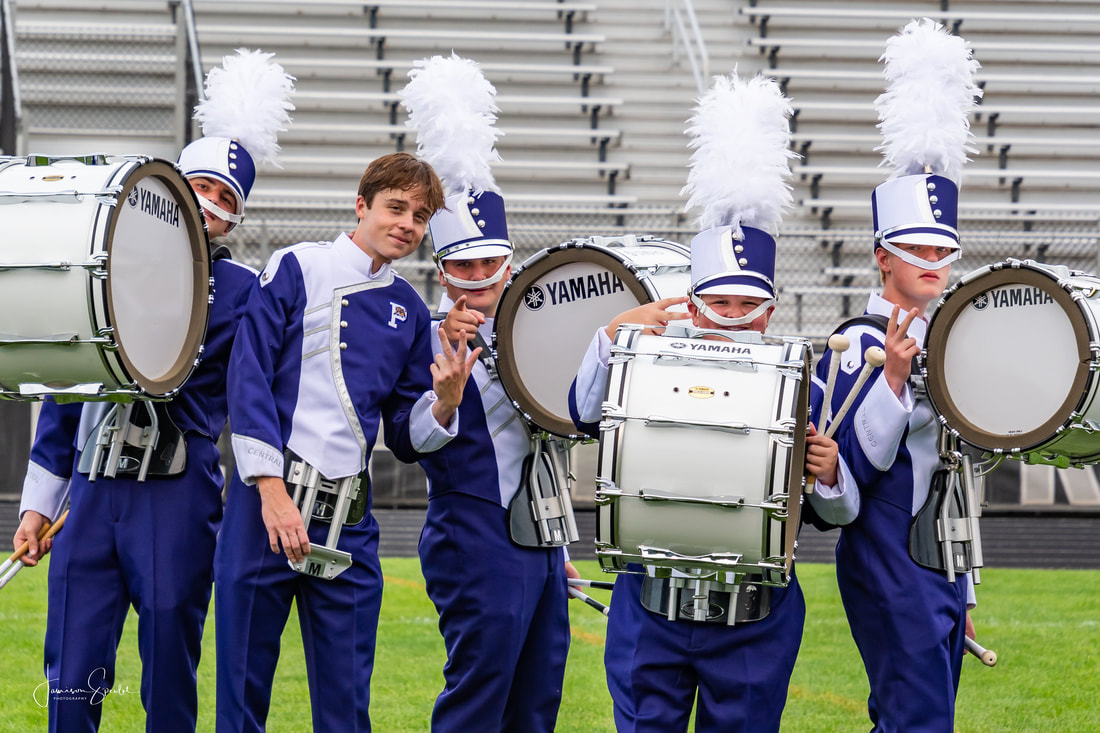PHSC MARCHING TIGERS
Battery Information - Bass Drums
Drumlines most frequently use pitched bass drums as tonal drums split between several percussionists. Marching bass drums, which produce the deepest sound in the Battery, are larger drums carried on harnesses or straps with the heads facing to the left and right of the player. The musicians carrying the bass drums typically line up in drum size order, but will also assume various positions for the purpose of a drill. Bass drummers use mallets with rounded or cylindrical heads often made of hard felt. High school, Colleges, and Drum Corps drumlines typically consist of four to six different bass drum sizes to ensure enough for a melody. Sometimes, in smaller bands, one may see only two or three bass drummers perform. A bass drum can weigh anywhere between 15 pounds and 40 pounds, depending on the model and size.
Each drummer plays a unique part, though the entire bass drum part is conceived as a whole. This allows for a melodic passage to be carried throughout the bass drumline, having runs of notes that flow up or down the drums and in pitch. In addition to these "split" parts, bass drummers will also have unison notes, where everyone plays at the same time. In addition to splits and unison hits, sometimes the basses will play a rim click, in which they will hit a metal bar attached to the rim of the drum. This is mainly used for subdividing rhythms, and are mainly used when the snares play one or more rim shots and the basses have a unison note on the offbeat.
Each drummer plays a unique part, though the entire bass drum part is conceived as a whole. This allows for a melodic passage to be carried throughout the bass drumline, having runs of notes that flow up or down the drums and in pitch. In addition to these "split" parts, bass drummers will also have unison notes, where everyone plays at the same time. In addition to splits and unison hits, sometimes the basses will play a rim click, in which they will hit a metal bar attached to the rim of the drum. This is mainly used for subdividing rhythms, and are mainly used when the snares play one or more rim shots and the basses have a unison note on the offbeat.

